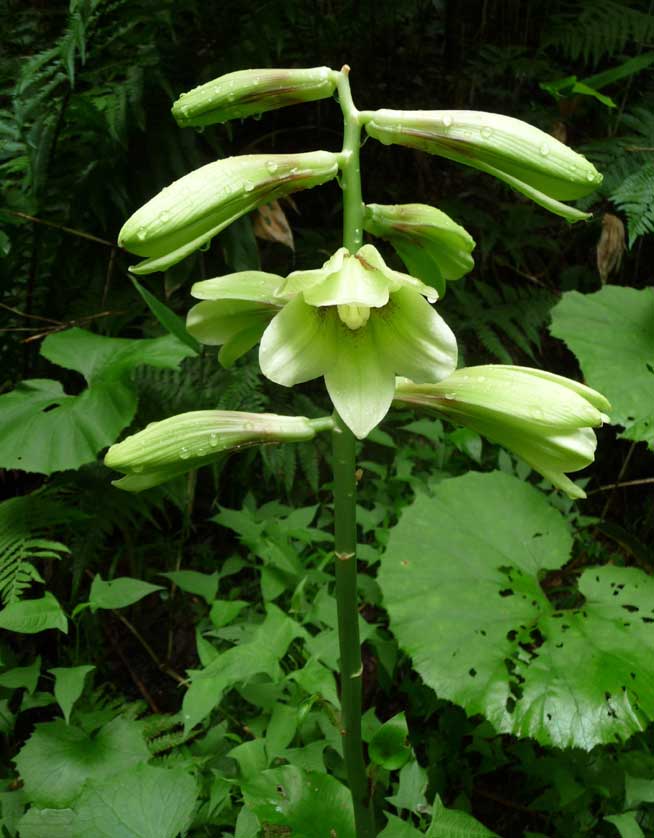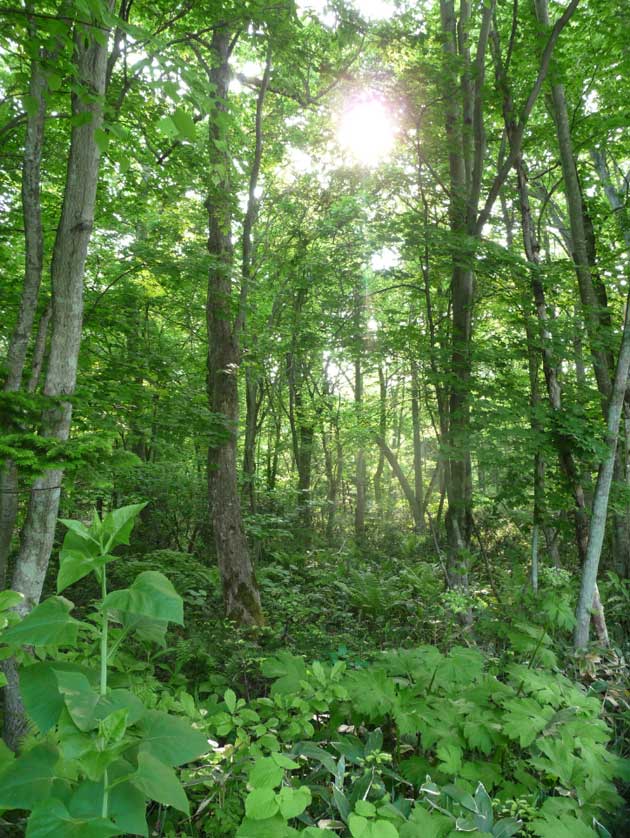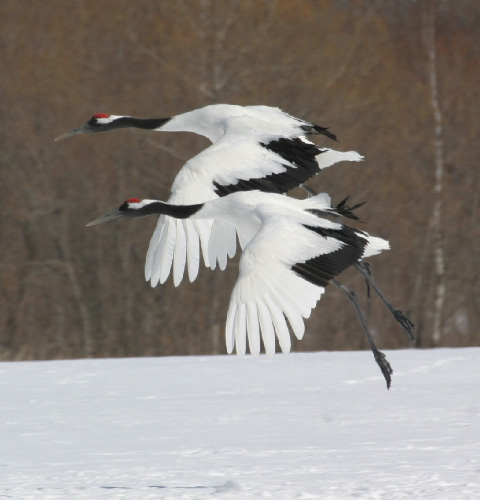Wild Hokkaido
- Published on : 28/12/2012
- by : Japan Experience
- Youtube
Wild Hokkaido: read an introduction to wild Japan in particular the diverse wildlife on Hokkaido.
Japan and its Wild Northern Frontier
Mark Brazil
Common images of Japan involve shiny cars, the latest electronic goods, and regimented ranks of commuters in business suits. Japan is, after all, an intensely developed country with a population pushing 127 million.
The Japanese people's belief in their homogeneity is an interesting one, not supported by even the most casual observation, and their cultural reputation as 'loving nature' is a surprising one when one travels the length and breadth of an archipelago showing few signs of that 'love'. Yet, behind the fade of development, outside the bounds of the metropolitan areas, and beyond the supposed homogeneity, there is another wilder Japan.
Wild Japan is astonishingly diverse, and the reasons, though apparent, are little known or noticed amongst those who merely travel the standard tourist circuit of this ancient country.
Another much-touted myth is that 'Japan is a small country'. It is, in fact, larger than either Britain or New Zealand, and almost exactly the same size as Germany, though natives of those countries would rarely consider themselves as belonging to small countries.
However, Japan's most significant feature is that it is not just an island country, it is a country of islands. Situated where the Oriental and the Temperate regions meet, the Japanese archipelago is situated on a significant natural history cross-roads.
The northern island of Hokkaido has a sub-Arctic feel, while in the far south, the islands known as the Nansei Shoto lie within the sub-tropical zone. In between, there exists just about every habitat that one could imagine, from coastal wetlands to high alpine meadows, and even deserts in the form of high volcanic barrens.
 The tall, multi-flowered spire of the Heart-leaved Lily in a lowland Hokkaido forest.
The tall, multi-flowered spire of the Heart-leaved Lily in a lowland Hokkaido forest.
At times, the Japanese islands have been connected to the Asian continent in three ways. In the past the Sea of Japan was a mere inland lagoon, and there were land connections around it: northwards via what is now Sakhalin to northeast Asia; westward via what is now the Korean Peninsula, and southwards via the raised ridge of the southwest islands and the island of Taiwan.
Through complex processes involving both tectonic movements and the pendulum swing between glacial and inter-glacial periods, at times sea-levels have risen, isolating parts of the archipelago as long ranges of mountains, or even as isolated mountain top islands (the Nansei Shoto today), where species have evolved in isolation.
At other times, sea-levels have fallen, re-connecting long-isolated lands to each other and sometimes to the nearby continent via land bridges across which animals have been able to immigrate and expand their ranges, hence allowing the populations of species once isolated to meet and mix once more.
As a result, and just as one example, some of Japan's nearly 130 terrestrial mammal species, such as the Asiatic Black Bear and the Badger, are widespread across Asia, while others, such as the Japanese Dormouse, Japanese Macaque and Japanese Giant Flying Squirrel are entirely unique to the Japanese islands.
Islands isolated for long periods, are crucibles of evolution, so Japan's many islands, support a fascinating mix of widespread Asian species, along with numerous local endemic plants and animals. Many species survived the last major glacial period in refuge here, leaving Japan with a fauna and flora with an ancient history, and a modern diversity.
The Japanese archipelago is dotted from Kyushu to Hokkaido with active volcanoes with eruptions occurring on some scale in most years. Earthquakes are frequent, often on a daily basis; tsunami occur fairly often, perhaps even annually, though their scale varies enormously and very few, perhaps only one a century, reach the towering proportions of the perhaps 30 m wave generated on 11 March 2011.
Typhoons batter the islands, particularly in the southern half of the archipelago, multiple times each year. Under such adversity, and in prolonged isolation as an archipelago off the east Asian continent, Japan's geological history combined with its great range of habitat types throughout its more than 3,000 km length, mean that it supports a very considerable range of species for its size.
 Summer brings warm temperatures and lush growth in the forests of Hokkaido and northern Honshu.
Summer brings warm temperatures and lush growth in the forests of Hokkaido and northern Honshu.
Japan is sufficiently long for it to span sub-arctic regions in the north and sub-tropical regions in the south. Its altitudinal range (the Japan Alps rise to over 3,000 m, and its highest peak Mt Fuji to 3,776 m) is such that it presents multiple climatic zones at the same latitude, such that one can travel from broad-leaved evergreen forest up in to the alpine zone in a hike of just a few kilometers, or from arctic-like sea-ice along Hokkaido's Sea of Okhotsk shore to sub-tropical waters around the Okinawan islands, where mangroves and corals are found. The Japanese islands support a diverse range of ecological environments, and hence support an extraordinarily wide range of animals.
Wild Hokkaido
Hokkaido, the rough-cut diamond of northern Nippon, has, despite a population of about six million, the important reputation as Japan's wild frontier. It is a frontier land that used to be connected to Sakhalin and the Asian continent to the northwest. Consequently, it shares many of its natural characteristics with that Okhotsk coastal region, and from a natural history perspective is very different from the rest of Japan that lies to the south.
Though surrounded by channels and seas, it is the deep channel to the south, the Tsugaru Kaikyo, which is most significant. Even during times of lower sea levels, this deep channel separated Hokkaido from Japan's main island of Honshu, while at the same time Hokkaido was connected to the north leaving a land bridge for wildlife to cross.
Many northern species reach their southern limits in Hokkaido, as they have been unable to cross the deep marine barrier to the south in to Honshu. Conversely, many species range north to the northern tip of Honshu, but have been unable to cross in to Hokkaido. Therefore, from a natural history perspective, Hokkaido is a very special place.
 The contrast between lush summer and frigid winter is extreme. For several months powder snow falls. Cross-country skiing is the best way of getting around this kind of landscape.
The contrast between lush summer and frigid winter is extreme. For several months powder snow falls. Cross-country skiing is the best way of getting around this kind of landscape.
Climate and topography dictate which species can live in any region, and Hokkaido is no exception. Prevailing northerly winter winds drive a weather machine here that is more Arctic than temperate. For many months each year snow blankets the island, lakes and rivers freeze, and sea-ice drifts against the Sea of Okhotsk shore; only hardy species can over-winter here. Summer is dramatically different, with southerly winds bringing migrant birds, a wealth of wildflowers, and temperatures in the 30's.
Hokkaido is mountainous at heart, and has extensive forests, enormous coastal wetlands, craggy cliffs, and offshore islands. From a natural history perspective, it is famous for its small surviving populations of Brown Bears and Blakiston's Fish Owls, its plentiful Red Foxes, abundant Sika Deer, winter hordes of clamouring swans, dramatic concentrations of the world's most spectacular eagles (Steller's Sea Eagle), and most famous of all for its breeding and wintering population of grace embodied - the Red-crowned Cranes of east Hokkaido. From a traveller's perspective it is an island that deserves visiting at any season, for its landscapes are broad and dramatic, even spectacular.

Graceful Red-crowned Cranes are a wonderful presence in the wilder parts of Hokkaido.
Related Japan Nature Articles
About Japan
Japan Geology
Japan Geography
Japan Climate
Wildlife Vacations









